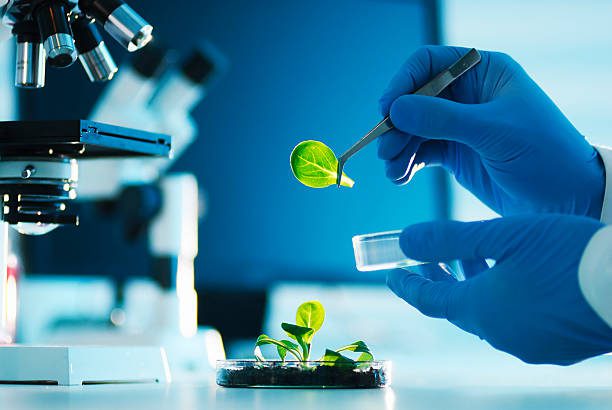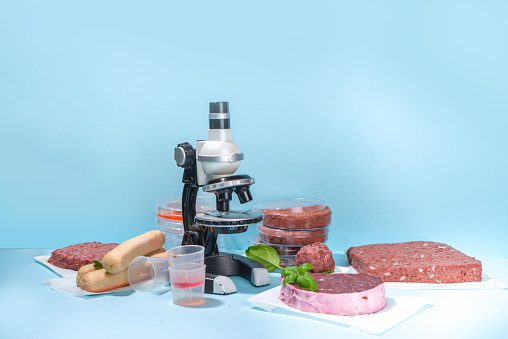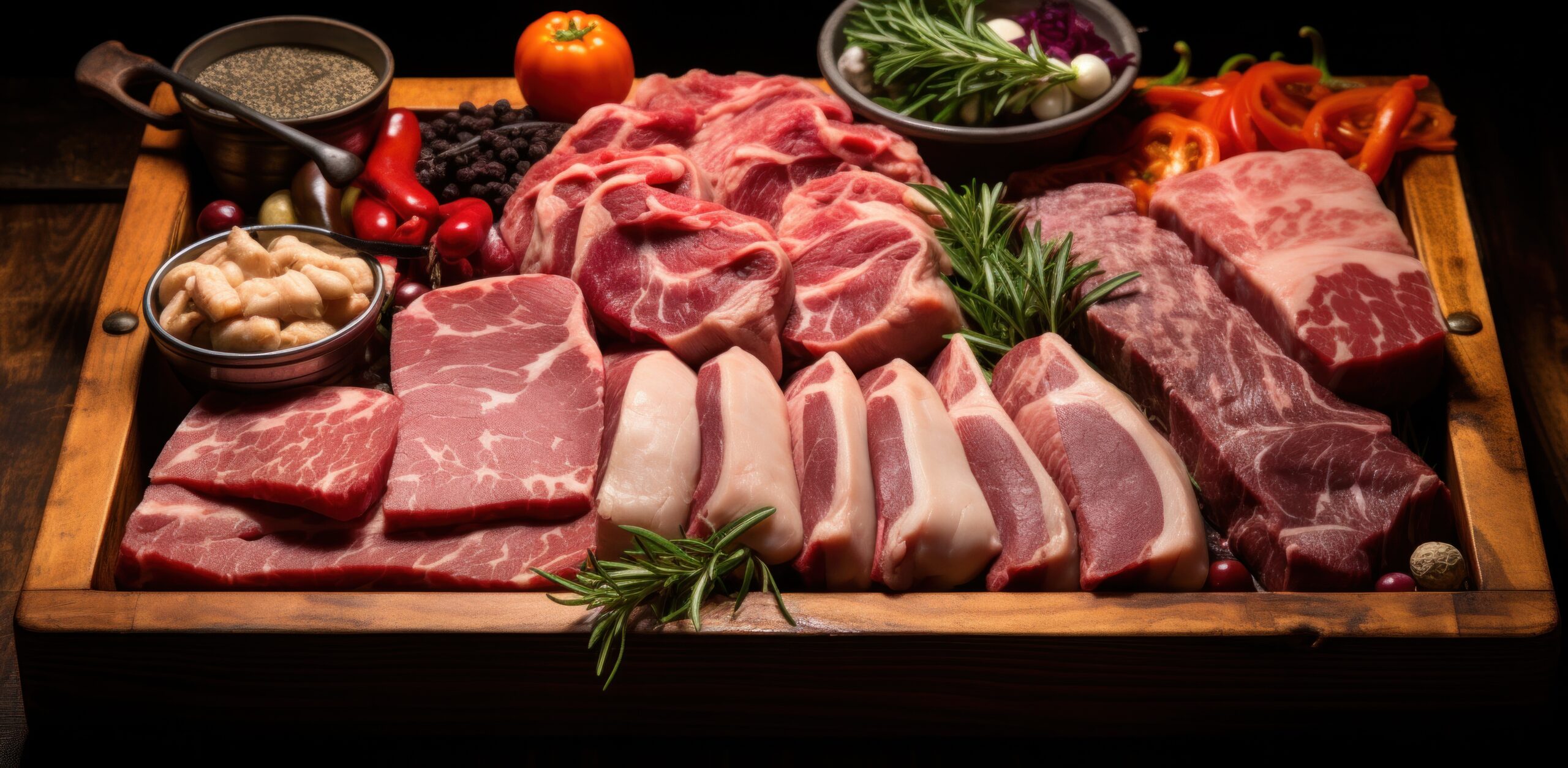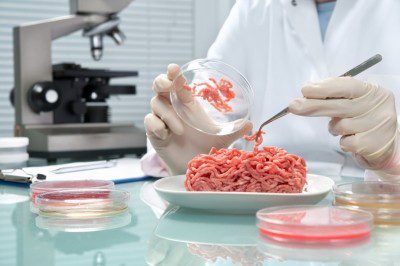Robots that harvest grapes, 3D-printed drones for crops and burgers grown from a single cell? Here’s how innovative new technology is making farming more efficient, sustainable and at the same time, revolutionizing agriculture across the continent.
In Africa, innovation in agritech is not only exciting, it’s essential. With a quarter of the economy of sub-Saharan Africa driven by agriculture – and more than 60% of the population made up of smallholder farms – technological innovation is the key to producing food that will not only meet the needs of a burgeoning population, but do it in a way that ensures the sustainability of the planet’s natural resources.

Cell-to-fork
In Cape Town, there’s a foodtech company looking at agritech and sustainability through a different lens – reverse engineering. While traditional agriculture involves growing grain that can be fed to livestock until it’s time for the slaughterhouse, Mzanzi Meat are changing an age-old process by identifying the best parts of livestock and using cellular agriculture grow meat in bioreactors. These large-scale brewing vats mean that a single cell, cultivated from a cow, sheep or pig, can produce meat en masse. According to research out of Maastricht University in the Netherlands, cells from a single cow can produce 175 million hamburgers.
When you compare this to the 440,000 cows traditional farming would require for the same output, what Mzansi Meat is doing suddenly makes a lot of sense. Not only does lab-grown meat mimic the exact texture of what can be found in the shops, it is ‘farmed’ without harmful antibiotics or growth hormones. Lab-grown meat could also be the solution to cutting greenhouse gas emissions, land use and other environmental concerns.

For Brett Thompson, the founder and CEO of Mzansi Meat, innovation will happen if more companies look into agritech from a biotech angle. “While more efficient irrigation systems and the use of drones have a role to play, it’s not enough,” he says.
In a landlocked country with few natural resources, farmers in Rwanda no longer need to choose between aquaculture or agriculture. NjordFrey Flagship Farm in Kayonza has created advanced, aquaponic equipment so that fish and vegetables can be farmed at the same time. The focus is hardware, but also sustainability, and the company’s starter kit includes excavating to accommodate rearing fish, establishing soil-less beds for agriculture, piping, plumbing, establishing pumps and filtration. This is all centered around increasing fish and crop production while using 95% less water.
In Ghana, Fredrick Kpamber and Kingsley Safo are the founders of an ‘eco-aquaponics’ enterprise called Big Green Agro. The off-grid farm is solar-powered and contains 194,500-liter pools, one 7,000-liter pool and four of 12,000 liters. Not only do they farm a high-quality local strain of tilapia, they cultivate nutrient-rich algae which is turned into a concentrate and used as a chemical-free fertilizer. One of the things that make Big Green Agro stand out is that the plants grown aquaponically are not for human consumption, but to feed the fish, and that makes the entire operation self-sustaining.
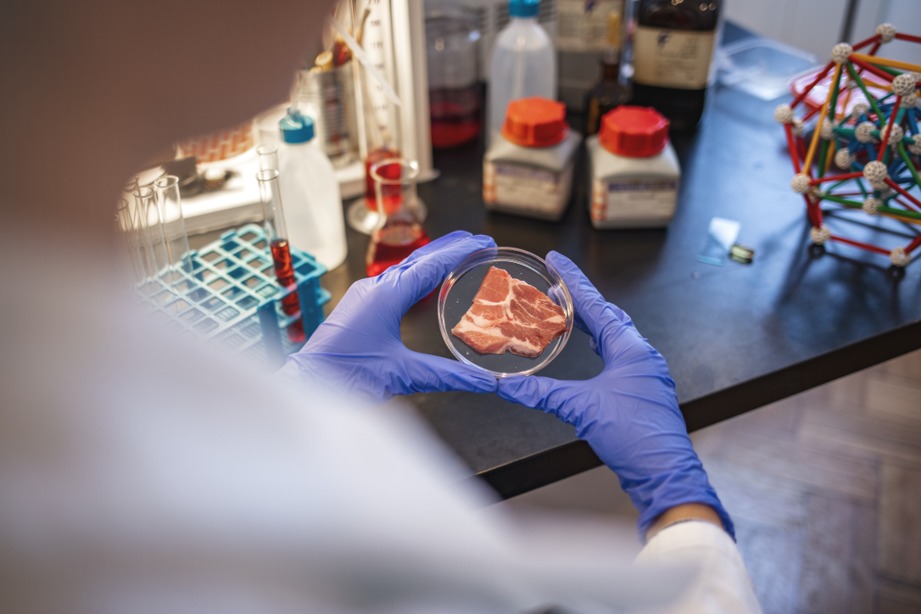
** Click here to read the full-text **







